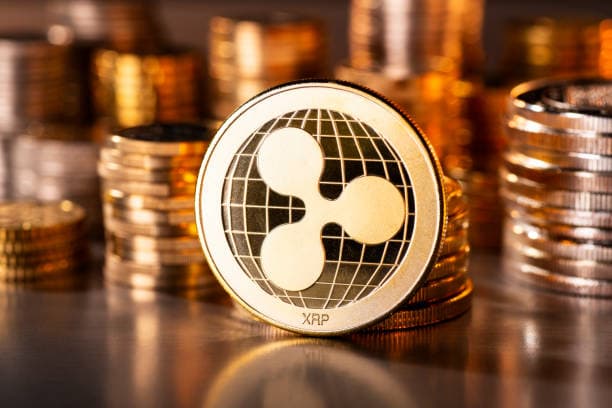In the world of cryptocurrencies, Swap (exchange tool) is a crucial feature, especially on Solana (SOL) chain, which attracts a lot of attention from users and developers with its efficient transaction speed and low commission.Swap tools are designed to help users exchange between different crypto-assets instantly, which simplifies the process of transaction and reduces the complexity of operation for users. In this article, we will delve into the Swap tools on Solana chain, categorize them and their functions, and provide users with a detailed analysis of their operations and tips on how to use them.

Classification of Swap tools
On the Solana chain, Swap tools come in many forms, with different platforms and protocols offering distinctive redemption methods. The tools can usually be categorized into the following groups based on the different features of the protocols:
1. Decentralized Exchange (DEX)
Decentralized Exchanges (DEX) are one of the most common types of Swap tools on the Solana chain. Through these platforms, users can exchange assets directly on-chain without having to rely on the intermediary of a centralized exchange.Solana's high throughput makes trading on these platforms smoother and less expensive. Common decentralized exchanges include:
- Serum
- Raydium
- Orca
These platforms use an Automated Market Maker (AMM) model to provide liquidity to users, who can swap by selecting pairs. They not only support the swapping of mainstream tokens such as SOL, but also allow users to interact with various DeFi protocols for higher returns.
2. Cross-chain Swap platform
Cross-chain Swap tools are a fast-growing class of tools in recent years that allow users to exchange assets between different blockchains. For example, certain platforms support users to exchange tokens directly between Solana and chains such as Ether and Boca. Such tools accomplish a seamless transfer of assets through bridging technology or cross-chain protocols. Representative cross-chain platforms include:
- Wormhole
- Allbridge
Through these platforms, users are able to overcome the limitations of liquidity segmentation between different chains and realize freer cross-chain asset exchange.
3. Aggregation Swap Tool
Aggregator Swap tools aggregate multiple DEX and cross-chain swap protocols to provide users with the best exchange routes and optimal prices. These tools are able to automatically select the path with the lowest transaction costs based on real-time market data, saving users exchange fees and improving transaction efficiency. Common aggregation-based tools include:
- 1inch
- Sushiswap
The advantage of these platforms is that they help users find the best priced pairs across multiple platforms, ensuring that they get the best trading experience in a complex market environment.
Functional Analysis of Swap Tool
Different types of Swap tools have their own features, but their core goal is always to enable users to quickly and securely exchange tokens. Below is a breakdown of the core features of several common Swap tools:
1. Automated Market Making (AMM)
Automated Market Making (AMM) is one of the core mechanisms of most Swap instruments on the Solana chain. instead of relying on a traditional buy and sell order book, AMM automatically sets prices through smart contracts. Liquidity providers deposit funds into liquidity pools and traders exchange through these pools.
The strength of AMM lies in its low latency and order book-less trading method, which enables users to complete transactions in real time. In the case of Raydium and Serum, for example, users can earn trading fee revenues from the platforms by providing liquidity, as well as participating in various activities in the DeFi protocol.
2. High-speed trading and low commission
The Solana chain, as a high-throughput blockchain, is particularly well suited for frequent transactions. Compared to traditional chains such as Ether, Solana's transaction confirmation time is extremely short and the fees are much lower than those of the Ether network, which makes the application of Swap tools on the Solana chain very advantageous. Taking Serum as an example, the platform supports tens of thousands of transactions per second, which ensures that even when the market fluctuates drastically, traders can still close deals quickly.
3. Diversified pair selection
The Swap tool on the Solana chain typically supports a number of different trading pairs, especially on decentralized exchanges (DEX), where users can choose from a richer selection of tokens to exchange. In addition to the mainstream SOL, USDT, and USDC, many project owners are also releasing their own tokens through the DEX platform, providing users with more investment opportunities.

For example, there are hundreds of different types of tokens that can be exchanged on platforms such as Raydium and Serum, including ERC-20 tokens, other cross-chain tokens, and native tokens on Solana.
4. Providing liquidity for income generation
For Liquidity Providers (LPs), the Swap tool on the Solana chain offers them the opportunity to earn revenue. By providing liquidity to decentralized exchanges, LPs can share in the platform's transaction fees or be rewarded with tokens. This mechanism greatly incentivizes community members to provide more liquidity, which in turn ensures smooth transactions.
In the case of Orca, for example, users can not only provide the liquidity of mainstream tokens such as SOL and USDT, but also participate in the distribution of earnings in the pool and enjoy the rewards offered by the platform.
How to Choose the Right Swap Tool
To choose the right Swap tool, users can consider the following aspects:
1. Fees and prices
Fees vary between Swap tools, and some platforms may offer lower transaction costs for frequent traders. Aggregated Swap platforms are often able to offer better prices by automatically selecting the best routes.
2. Richness of trading pairs
If you wish to exchange certain specific tokens, it is important to choose a Swap platform that supports that token. Platforms with better liquidity usually offer more trading pairs and an efficient trading experience.
3. Security and reputation
When choosing a Swap tool, users need to focus on the security of the platform. Decentralized exchanges are relatively safer as there is no risk of a single point of failure. It is still necessary to choose platforms that have a good reputation and community support to ensure that your assets are not exposed to potential risks.
4. Cross-chain functionality
If you need to exchange tokens between different blockchains, it's important to choose a Swap tool that supports cross-chaining.Cross-chaining tools such as Wormhole help you to freely exchange assets between Solana and other blockchains, extending your trading freedom.
concluding remarks
Solana's on-chain Swap tool provides a fast, low-cost token exchange platform, whether it is a decentralized exchange, a cross-chain Swap platform, or an aggregated tool, all of which offer users a wealth of choices and a high-quality experience. With the continuous development of the Solana ecosystem, the functionality and liquidity of Swap tools will be further enhanced, and users will be able to enjoy a more convenient and secure digital asset trading experience. By understanding the classification and functions of various Swap tools, you can choose the most suitable exchange tool for yourself according to your personal needs and realize efficient digital asset management.







